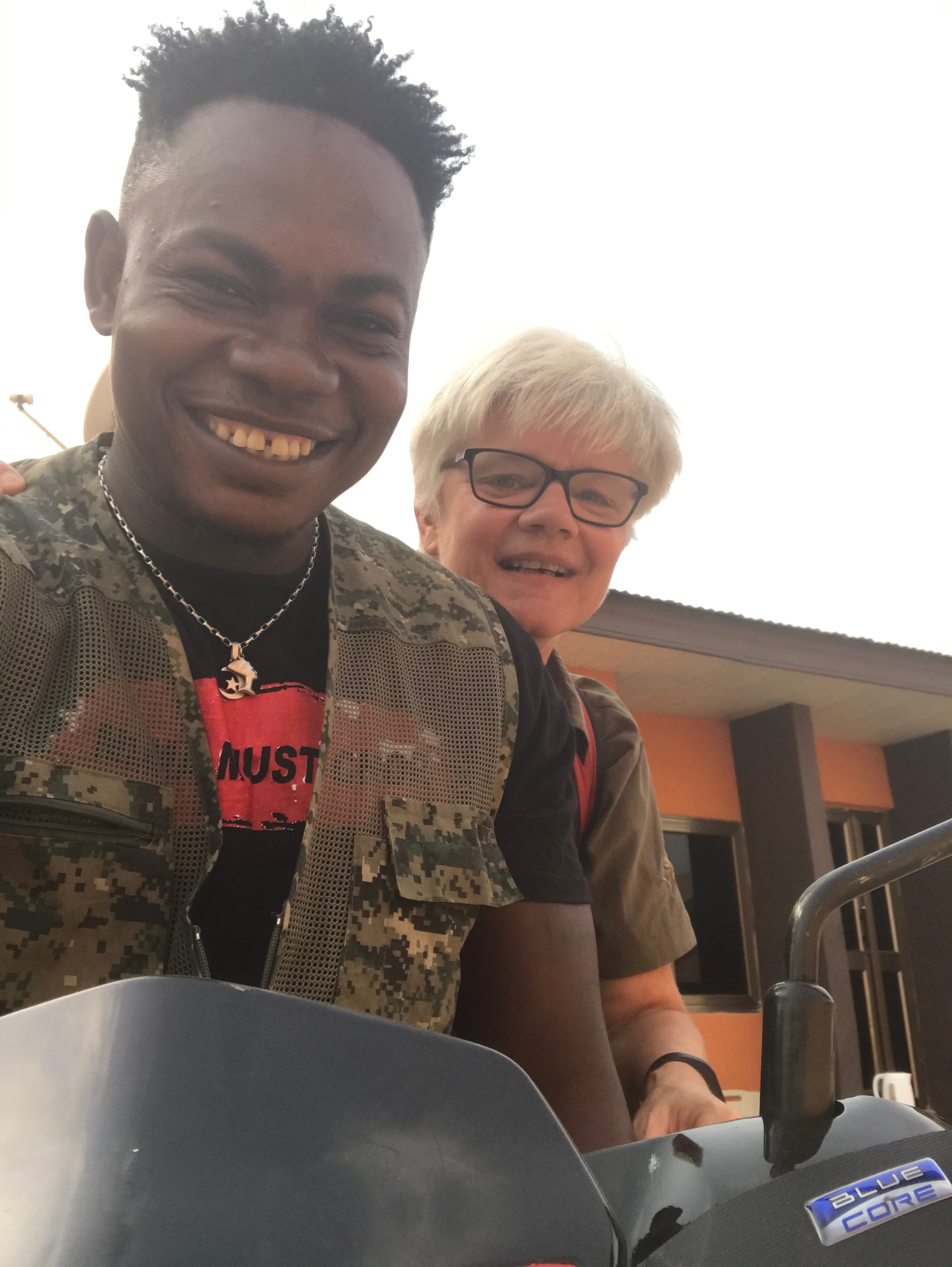In West Africa, co-labouring of gold miners and researchers occurs in specific mining terrains: the underground takes center stage, but from the surface, it is impossible to see how gold is located and extracted below. Even though researchers do their utmost to learn by participating in activities, for various reasons, underground workspaces are often difficult to access. How to share experiences and knowledge? Filming together - miners filming us and for us - making maps, and drawings together led to eye-opening conversations and provided insights into the hardships, team spirit, and expertise as well as dangers underground. Travel across mining terrains is also important for co-labouring and the sharing of experiences: miners visiting each other’s mining sites, and researchers bringing information on mining practices from other continents. It is in the mobility of ideas, people and techniques that existing practices can be balanced against alternatives elsewhere and possible futures in the here and now.



1/3 Filming with Ebenezer Knight Mannah
Tarkwa-based gold miner Ebenezer is one of the main co-labourers of Gold Matters' team members Sabine Luning and Robert Pijpers. He is foreman in an underground mine run by a Ghanaian license owner together with Chinese investors and engineers.
Ebenezer is filming underground and explaining the connections underground between informal small-scale miners, called Galamsey in Ghana, and the more formal mining operations.
2/3 Filming with Ebenezer Mannah II
Here Ebenezer has descended underground together with Robert in the mine where he works, collaborating in the production of visual material.
3/3 Watching underground footage
The film was made by Israel, son of Benjamin Ampiah one of our main co-labourers. Since 2019, Benjamin’s crew has been rebuilding the old infrastructure in tunnels before they could start mining early 2020. Here, Israel is just back from filming underground and miners explain the footage while we are watching together.


1/2 Piece of wood to explain the geological situation
Since underground work is invisible on the surface, Zakari Imrana explains it by posing a piece of wood on the ground. He visualizes how miners dig their vertical shafts, and how they will start tunneling horizontally once they can tackle the gold matter deeper down.
2/2 Tracing the orebody
Underground orebodies cannot be seen from the surface. Here, Zakari is tracing the direction of the underground orebody on his motorbike and marks GPS points on an App called SW Maps. In this way we learn the geological situation in which the small-scale miners delve.


Drawing on the sand
Miners explain to Nfaly Diama, Moussa Koné, Luigi Arnaldi and Cristiano Lanzano how, in the system of bè, small pits targeting alluvial deposits are organized in rows and at fixed distance between each other. Underground tunnels follow certain directions to avoid collapse or conflict between teams.



1-3/3 Preparing for a blast
The first photo portrays our co-labourer, Haruna Bashiru, who has made the other photos too. He is portraying the work of a blast-man underground. First miners have dug holes in the wall (called the face) they want to crack. The blast-man will meticulously insert the dynamite in the holes and tie the dynamite with ropes connecting it to the detonator. The work is dangerous and requires great skill.



1/3 Miners on the move to co-labour with miners
Sometimes people need to travel to share knowledge and experiences. Northern and southern Ghana meet, when Zakari from Kejetia discusses mining matters with Benjamin, who has come to visit from Tarkwa.
2/3 Travelling between mine and home in company
Zakari is mining in Kejetia but Sabine accompanied him to Obuasi, where his parents live. Zakari introduced her to his family and showed her the mining town.
3/3 Mobility of knowledge - Comparing mining practices
Miners are interested in mining practices elsewhere. The movement of knowledge and miners is a characteristic of gold mining worlds. Miners and researchers share an interest in comparing and exchanging knowledge. Here Zakari and Marjo de Theije are watching photos of mining taken in Suriname, a very different mining world compared to northern Ghana.



1/3 Escort for the researchers - on the road in good company
Researchers cannot always access mining sites easily, since these are often located far out in the bush, and strangers need local companions to vouch for them. Here, Alizeta Ouedraogo, Marjo de Theije and Sabine Luning are accompanied by a security detail. A safe trip and most rewarding exchange of knowledge were the result.
2/3 Learning in line-up
For researchers, doing is the best way of learning and they like to join the action. Here, Marjo is participating in the line-up of women moving stones from mine to heap to the crusher.
3/3 Selfie with shanking girls
After crushing stones, the powder still contains small stones. Sifting out these larger grains which will still need to be milled is called ‘shanking’. The women carrying out these tasks identify as ‘shanking girls’. Their work is rewarded with cups of small stones containing gold material. Here, the work is finished and it is time to celebrate with selfies.

